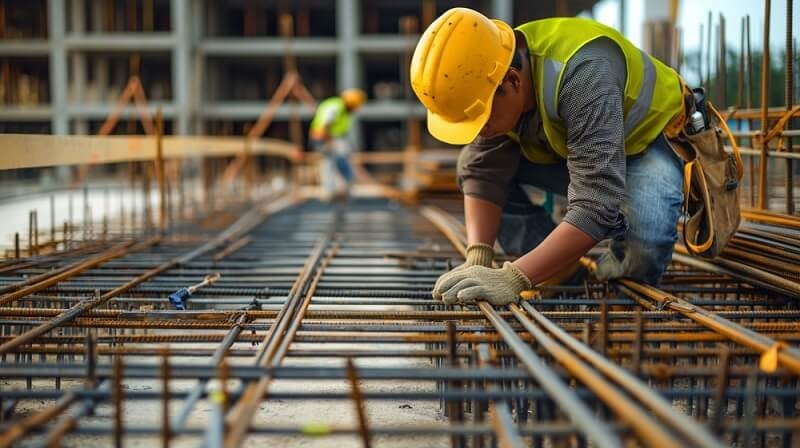
Construction in KY isn't what it used to be—and that’s a good thing. From small towns like Paducah to booming development in Louisville and Northern Kentucky, the building and construction scene in KY is shifting fast. Whether you're a contractor, developer, or just keeping tabs on the industry, it’s time to get real about what’s trending, what’s challenging, and what’s next.
Let’s start with the obvious. Technology isn’t just part of the conversation anymore—it’s driving it.
If you're still running builds without Building Information Modeling, you're already behind. BIM helps Kentucky builders visualize everything from wiring to concrete pours before ground is even broken. Projects stay lean, timelines stay intact, and change orders don’t blow up budgets.
Drones are taking over jobsite surveillance. Meanwhile, cloud-based software connects every trade on a single dashboard, making communication smoother and less prone to chaos. This isn’t just a tech flex—it’s a necessity when you’re managing modern building and construction in KY.
Explore More: Digital Construction: The Rise of Smart Cities in Kentucky
Sustainability has officially gone from niche to non-negotiable. If you're bidding on new contracts without offering energy-efficient solutions, you're getting passed over.
More projects are using reclaimed materials, solar-ready designs, and HVAC systems built for efficiency—not just compliance. Kentucky’s commercial sector is seeing a surge in LEED-certified spaces, and even rural builds are getting greener with low-impact site prep and smart insulation strategies.
From Lexington rooftops to Berea’s solar farm, green construction trends are catching serious momentum. Solar integration isn’t just good PR—it’s driving long-term savings. And let’s be real, clients want that.
Prefabricated structures have matured beyond temporary classrooms and site offices. Think full-scale apartment units, retail stores, and healthcare pods—shipped in, stacked up, and move-in ready in record time.
Modular building trims labor hours, reduces material waste, and keeps jobsites cleaner. In a state like Kentucky—where weather can stall a project in a heartbeat—this controlled off-site production makes perfect sense. It’s fast, smart, and cost-conscious.
Northern Kentucky is the poster child of regional transformation right now. The $5 Billion Mile initiative isn’t hype—it’s actual change you can see from the highway.
Major projects like the Brent Spence Corridor and Newport’s Ovation mixed-use campus are setting the tone for construction in Kentucky. They're not just improving transport—they're changing the way entire regions are designed and used.
Don't sleep on Lexington and Bowling Green. They’re pushing smarter land use, energy efficiency, and sustainable commercial real estate. Meanwhile, small towns are seeing infrastructure dollars hit roads, bridges, and broadband builds.
Construction in KY looks different depending on where you stand. And if you’re in this space, you'd better pay attention to those regional nuances.
Big on adaptive reuse, LEED-certified projects, and historic revivals. If you’re not versed in green retrofits, don’t expect to win bids here.
Tight development zones mean denser builds and strict land-use rules. Expect infill projects, vertical growth, and resistance to anything that encroaches on Bluegrass.
Modular construction and infrastructure work dominate. Think water systems, school upgrades, and manufacturing plants—less glam, more grit.
This is where high-dollar, high-profile builds live. If you want to see the future of building and construction in KY, keep your eyes north.

Let’s not sugarcoat it: skilled workers are hard to find. And the ones still on the job are juggling more than ever.
Kentucky isn’t immune to the national skilled labor crunch. Trade schools aren't filling fast enough, and veterans are aging out. That leaves fewer electricians, fewer masons, fewer HVAC pros—and longer delays.
You want a reliable team in 2025? Start training them now.
Inflation may be cooling, but don’t let that fool you. Between high material costs and steep interest rates, projects today are under tighter financial scrutiny than ever.
Steel, lumber, concrete—they’ve all seen spikes. Even with prices normalizing, the fluctuation is enough to make lenders and developers think twice.
Financing is tougher to lock in. Lenders are pushing for lower-risk builds, smaller budgets, and guaranteed returns. That impacts everything—from how buildings are designed to how fast they break ground.
Construction is one of the most-targeted industries for ransomware attacks—and it’s easy to see why. Outdated software, unsecured jobsite devices, and poor digital protocols make the industry an easy mark.
You may not see it yet, but smart buildings and infrastructure projects are creeping into Kentucky’s construction scene. Think intelligent HVAC systems, automated lighting, integrated solar, and EV-ready parking structures.
It’s not a tech fantasy. It’s happening in commercial builds across Lexington and Louisville—and soon it’ll be the expectation everywhere.
The International Green Construction Code (IgCC) isn’t statewide yet, but cities like Louisville and Lexington are taking the lead in integrating its standards.
If you're not building to green specs now, you’ll be rewriting your playbook soon. The push for energy efficiency, water reuse, and carbon reduction is only growing louder.
LEED, ENERGY STAR, and IgCC-aligned builds aren’t just good for the environment—they command better prices, attract better tenants, and build stronger community support.
Let’s talk about what’s actually holding builders back across the Commonwealth:
Smart firms are planning for these risks now—not reacting to them later.
Despite all the challenges, there’s massive opportunity brewing in the Bluegrass. Between infrastructure funding, green innovation, and a statewide appetite for modern builds, the next five years could reshape the skyline—and the way we build it.
More to Discover: Construction Industry: Trends & Growth in Kentucky
Construction in Kentucky isn’t just evolving—it’s accelerating. From sustainable materials and modular builds to tech-driven design and regional shifts, there’s no one-size-fits-all approach anymore. Whether you're working on a school in Pikeville or a high-rise in Covington, the key is the same: build smarter, build greener, and stay ahead.
If you're not already riding the wave of these construction trends, you're watching from the shore. And in 2025, that’s not where you want to be.
This content was created by AI